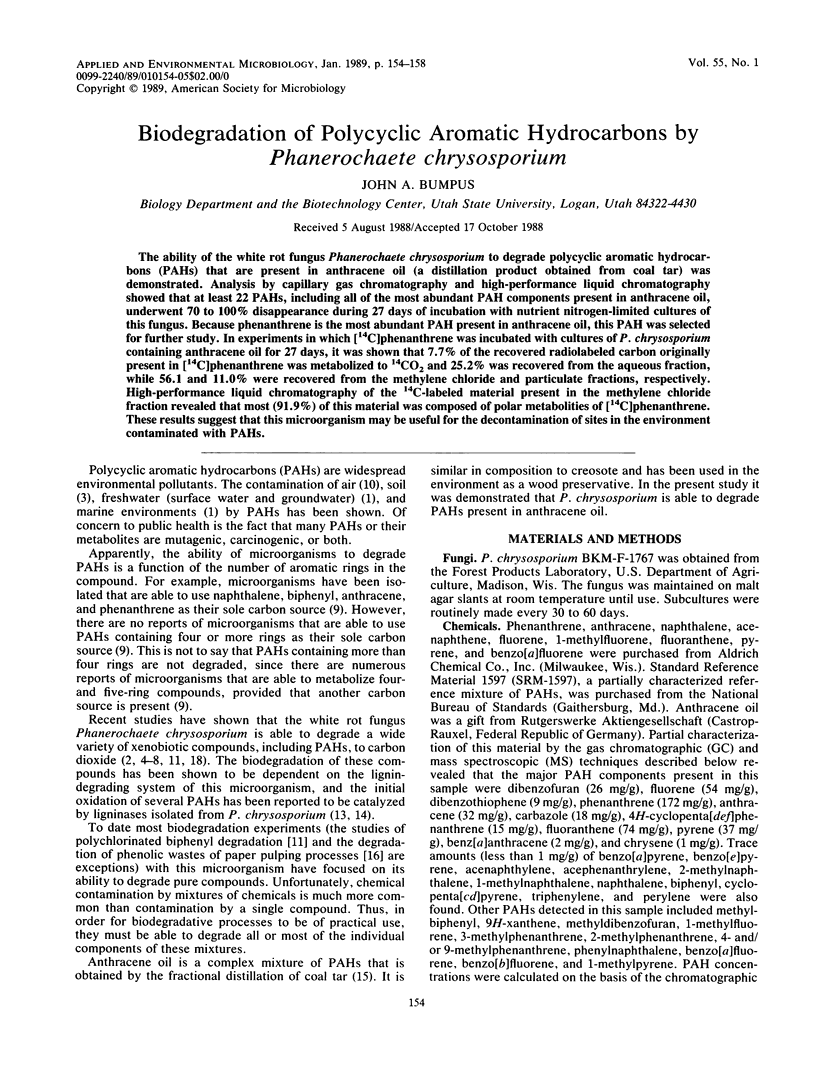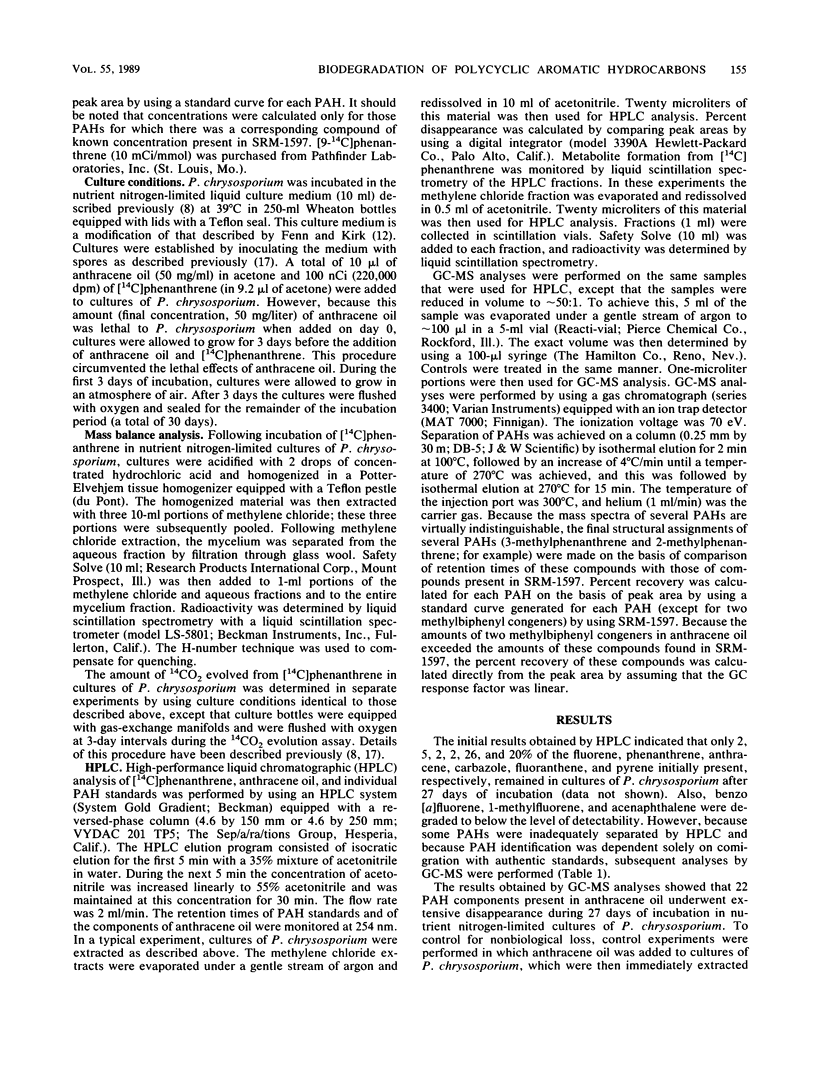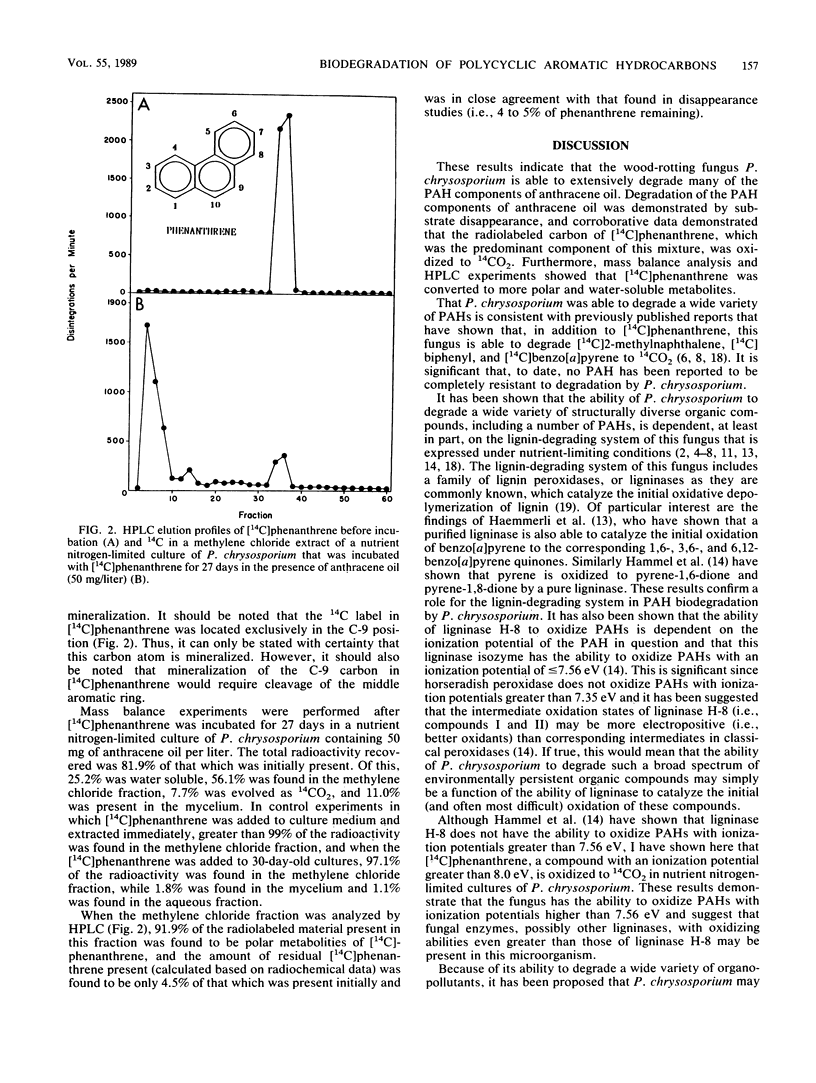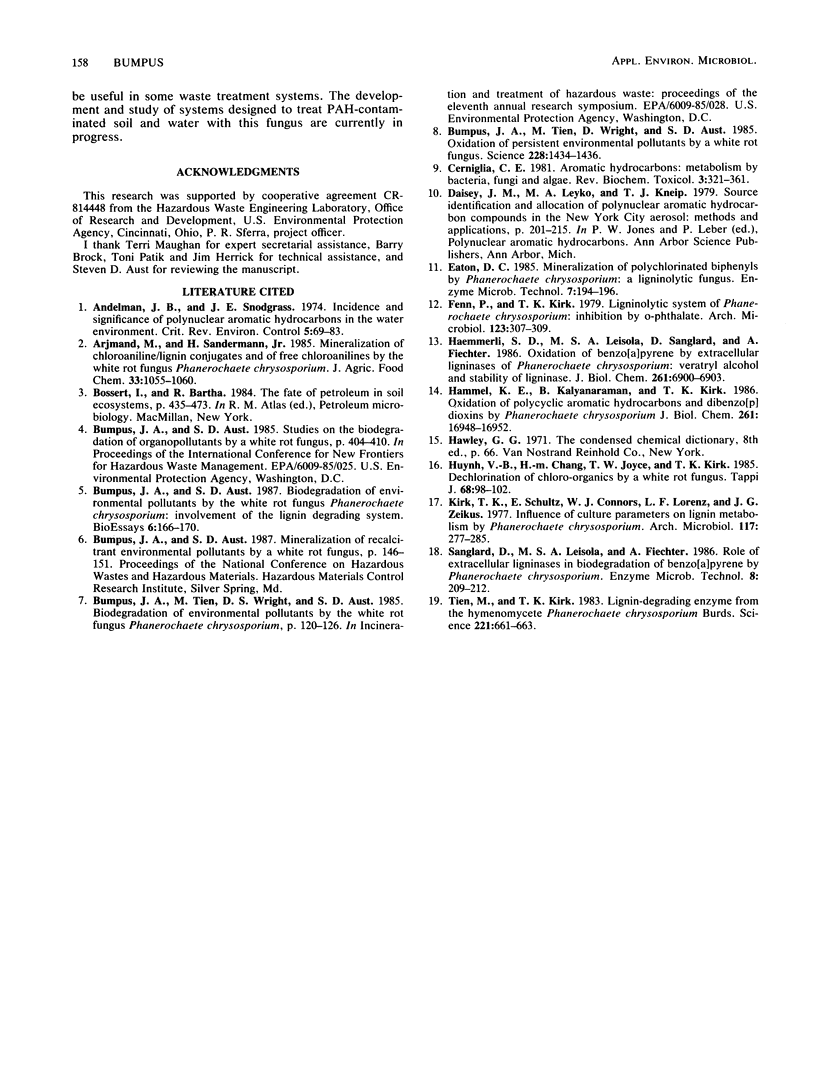Abstract
The ability of the white rot fungus Phanerochaete chrysosporium to degrade polycyclic aromatic hydrocarbons (PAHs) that are present in anthracene oil (a distillation product obtained from coal tar) was demonstrated. Analysis by capillary gas chromatography and high-performance liquid chromatography showed that at least 22 PAHs, including all of the most abundant PAH components present in anthracene oil, underwent 70 to 100% disappearance during 27 days of incubation with nutrient nitrogen-limited cultures of this fungus. Because phenanthrene is the most abundant PAH present in anthracene oil, this PAH was selected for further study. In experiments in which [14C]phenanthrene was incubated with cultures of P. chrysosporium containing anthracene oil for 27 days, it was shown that 7.7% of the recovered radiolabeled carbon originally present in [14C]phenanthrene was metabolized to 14CO2 and 25.2% was recovered from the aqueous fraction, while 56.1 and 11.0% were recovered from the methylene chloride and particulate fractions, respectively. High-performance liquid chromatography of the 14C-labeled material present in the methylene chloride fraction revealed that most (91.9%) of this material was composed of polar metabolites of [14C]phenanthrene. These results suggest that this microorganism may be useful for the decontamination of sites in the environment contaminated with PAHs.
Full text
PDF




Selected References
These references are in PubMed. This may not be the complete list of references from this article.
- Bumpus J. A., Tien M., Wright D., Aust S. D. Oxidation of persistent environmental pollutants by a white rot fungus. Science. 1985 Jun 21;228(4706):1434–1436. doi: 10.1126/science.3925550. [DOI] [PubMed] [Google Scholar]
- Haemmerli S. D., Leisola M. S., Sanglard D., Fiechter A. Oxidation of benzo(a)pyrene by extracellular ligninases of Phanerochaete chrysosporium. Veratryl alcohol and stability of ligninase. J Biol Chem. 1986 May 25;261(15):6900–6903. [PubMed] [Google Scholar]
- Hammel K. E., Kalyanaraman B., Kirk T. K. Oxidation of polycyclic aromatic hydrocarbons and dibenzo[p]-dioxins by Phanerochaete chrysosporium ligninase. J Biol Chem. 1986 Dec 25;261(36):16948–16952. [PubMed] [Google Scholar]
- Tien M., Kirk T. K. Lignin-Degrading Enzyme from the Hymenomycete Phanerochaete chrysosporium Burds. Science. 1983 Aug 12;221(4611):661–663. doi: 10.1126/science.221.4611.661. [DOI] [PubMed] [Google Scholar]


